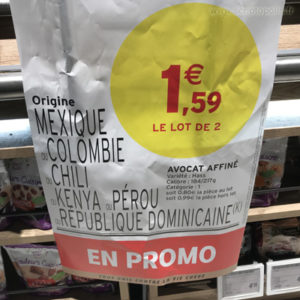Globalization
Among market’s graphic devices, mention of the geographical origin of fresh goods has significantly transformed the act of purchasing for some consumers. With this now mandatory information, they can add a geopolitical dimension to their shopping, by not only weighing in the balance the price of food, but also what is known about the conditions of production in a given country, whether in terms of health or labor rights. Of course, it also allows to take into account the distance these goods have traveled before arriving on the shelf, which is a valuable indicator of their carbon footprint. The inscription may also serves as an educational tool. Learning where certain fruits or vegetables come from, depending on the store and the time of year, gives us an idea of the supply chains on which our groceries are based. Sometimes to the point of dizziness, so dense are these chains, populated by intermediaries that blur the boundaries and make traceability efforts in a regime of globalization even more difficult. Here, they are reduced to the use of a weak and frustrating “or”. Learning is yet not completely prevented, and could even turn into a game, as long as one accepts to comply with the randomness of an extensive list of origins. Will one be able to guess where each of the avocados in the stall comes from without the help of any additional labels?







